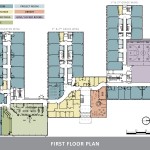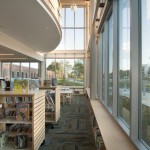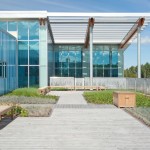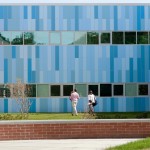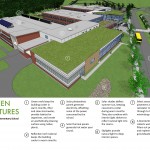Falmouth Elementary School
Project Name: Falmouth Elementary School
Falmouth Public Schools incorporated two elementary schools and the fifth grade into a single, 140,000 sf building on the town’s existing high school/middle school campus. The new 915-student facility provides district-wide staff, educational, athletic, and heat plant efficiencies. Most significantly, it represents the community’s dedication to providing an advanced and sustainable learning environment for its youth.
The school’s core includes a library, cafeteria/auditorium, gymnasium, multipurpose room, and administrative offices. Classroom wings branch from the core, separating public spaces from classrooms. Respecting that students and staff were relocated from small schools into a larger facility, the design breaks the building down in scale, creating three separate, uniquely identifiable wings divided by age grouping.
The school promotes interaction and intellectual curiosity starting with the building, extending to the environmental context, and projecting outward to the greater world. Building features can be used as teaching tools–the vegetated roof classroom serves as a platform for lessons on the natural environment, and the 6.8MBH biomass boiler building includes a public viewing platform, color-coded piping and informational signage. The classroom technology focus–including iPads, laptops, Wi-Fi, LCD projectors, document cameras, and sound amplifying systems–encourages communication and learning across various media and geographies, and provides for constant adaptation to changing learning requirements.
Architecturally, grasses, water, and woodlands are central themes echoed in forms, floor and wall patterns, and material and color choices. They speak to the sustainability focus of the school, which expects to achieve LEED Gold.
Low-Impact Development (LID) strategies include bioretention basins, grassed soil filters, permeable pavement, vegetated roofs, and rainwater harvesting for flush fixtures and irrigation. The school is heated, cooled, and partially powered by renewable geothermal, biomass and solar energies. Interior spaces are filled with daylight from optimized building orientation, light shelves, skylights, interior windows, and sloped ceilings. Energy conservation measures include reflective roofing, generous insulation, high performance glazing, solar shades, energy recovery ventilators, occupancy sensors, and photosensors.
Occupants enjoy a vibrant and healthy interior with extensive views, low-VOC finishes, excellent ventilation, operable windows, and adjustable lighting. Materials were carefully considered for performance and ecological impact. In the entry and cafeteria, ceilings reminiscent of forest landscapes and rolling waves moderate noise and are made from Maine-grown cedar. 79% of wood products are FSC-certified. Flooring, carpet, ceiling tiles and other materials contain recycled content, and 82% of construction debris was diverted from landfills.



